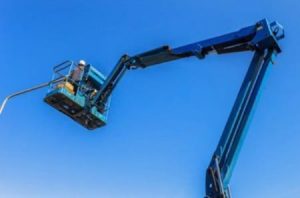 The Occupational Safety and Health Administration estimates that half of all fatal falls from aerial lifts occur when workers are not tied off. One worker, for example, was ejected 80 feet from an aerial lift.
The Occupational Safety and Health Administration estimates that half of all fatal falls from aerial lifts occur when workers are not tied off. One worker, for example, was ejected 80 feet from an aerial lift.
Improper set-up and/or operation, or exceeding weight capacity account for twice as many aerial lift fatal falls as mechanical failures.
Safe Work Practices
We should adopt work practices to ensure our safety from falls during the operation of aerial lift devices. Consider some of these practices to get you through your day intact:
- Always tie-off, wearing a body harness a lanyard attached to a recognized engineer-designed anchorage point;
- Never move any aerial lift with workers elevated;
- Only operate what you are trained to use by your employer and follow manufacturer’s instructions;
- Control your positions using parking brakes and stops/wheel chocks;
- Control your access zone around the aerial lift so no worker gets crushed, and so that nobody gets caught on anything, or is likewise ejected;
- Our aerial lift is not a forklift—never lift, push, or move objects;
- Never exceed the load capacity;
- Always check tire pressure;
- Remember to extend outriggers, and that they are level;
- Make sure that the lift is not under power lines; and
- Never operate in high wind conditions.
WITH AERIAL LIFTS…YOU HAVE TO STAY TIED IN!
Download flyer: STOTW_1110_AerialLiftFallProtection Download Spanish flyer: STOTW_1110_AerialLiftFallProtection_esp

